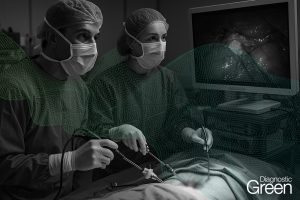Background: Intraoperative fluorescence imaging with Indocyanine Green (ICG) shows promising results in reducing postoperative hypocalcemia in adults. Recently, we developed a standardized intraoperative model for quantified ICG fluorescence imaging in adults. This technique could also be relevant for children, as they face the highest prolonged consequences of postoperative hypocalcemia. The aim of this study was to evaluate the feasibility and reproducibility of quantified ICG fluorescence imaging of parathyroid gland perfusion in children using a standardized intraoperative model.
Methods: In this multicenter, proof-of-concept study, children undergoing hemithyroidectomy or total thyroidectomy for any indication were included in three academic hospitals. The setup and settings of the camera were standardized across participating centers, in order to generate a homogeneous dataset, referred to as the FLUOPATCH protocol. ICG perfusion graphs were plotted postoperatively to quantify the signal. Feasibility was assessed based on enrollment rate, intraoperative logistical feasibility, and success rate. Reproducibility was evaluated by comparing ICG perfusion curves to those observed in adults and across the participating centers.
Results: All eligible (n=23) patients were enrolled and in all patients the FLUOPATCH protocol was executed as planned. ICG perfusion curves were successfully generated for 57 out of 80 potentially exposed parathyroid glands, achieving a success rate of 71.3%. The characteristics of the ICG perfusion curves in children were consistent with those observed in adults, and were reproducible across the three participating centers.
Conclusion: Quantified ICG fluorescence imaging of parathyroid gland perfusion in children is feasible and reproducible across different centers when using the FLUOPATCH protocol.




